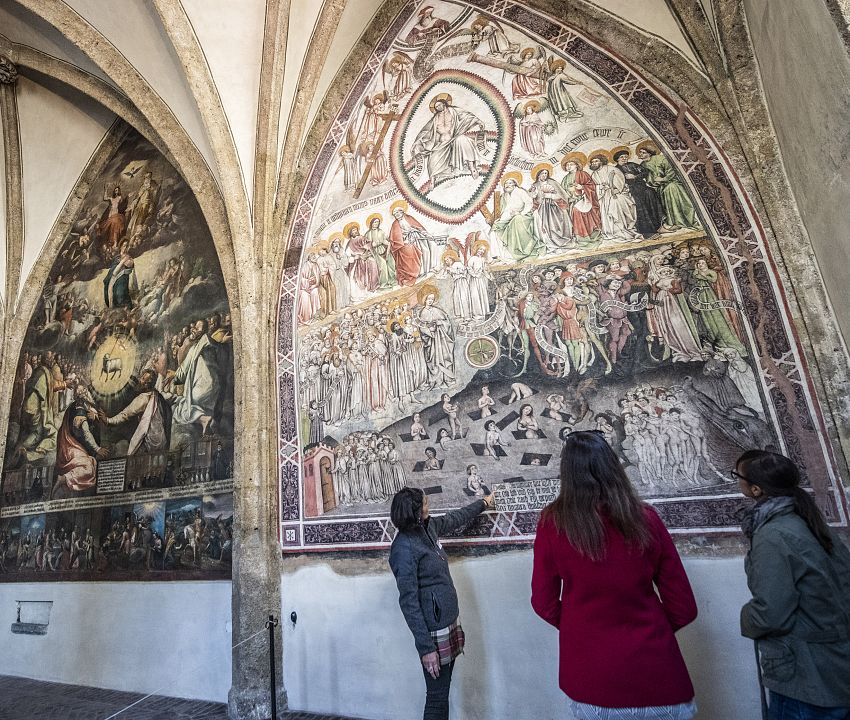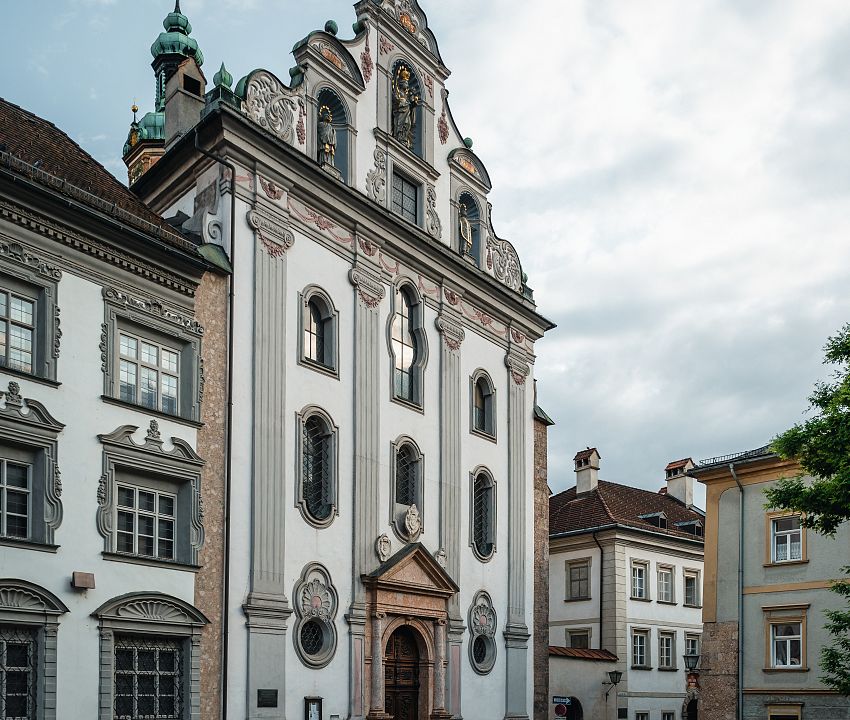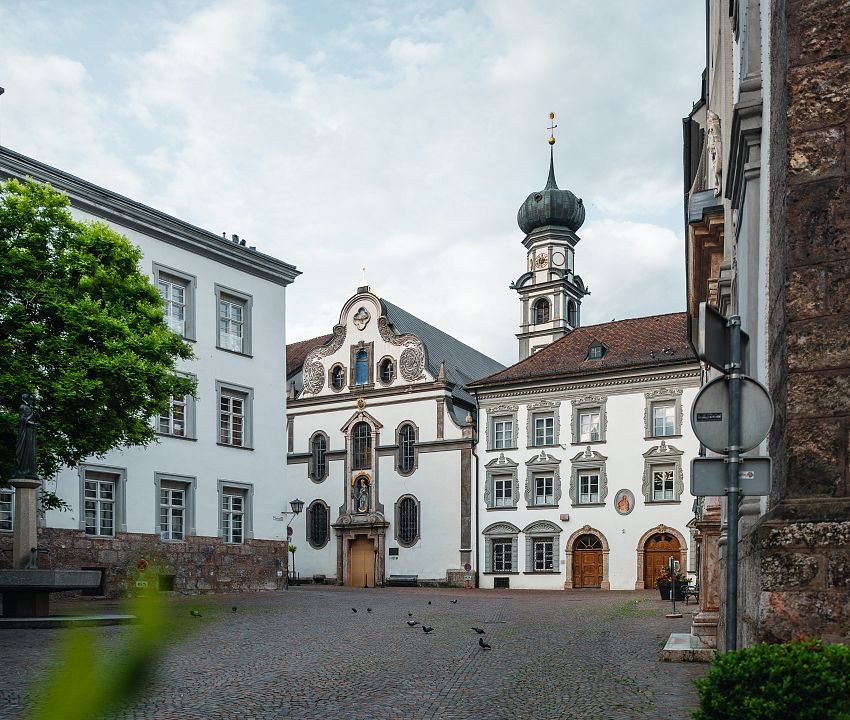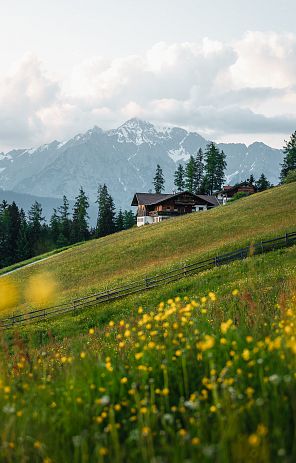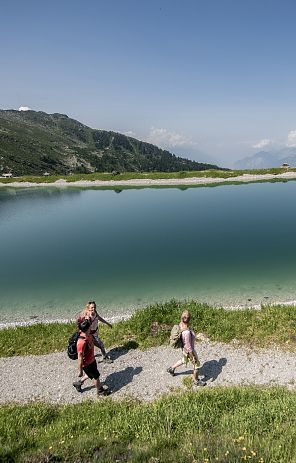Churches & Monasteries. In Hall in Tirol
Hall in Tirol boasts a large number of churches, chapels and special church towers. In addition to the parish church of St. Nicholas, Hall is also home to the Damenstift convent with the Herz-Jesu monastery, the Jesuit church and the Magdalenenkapelle chapel. All of these can be explored using the Locandy digital city tour or on a guided tour.
St. Nicholas parish church - Hall in Tirol
Hall's parish church was built before 1281 and dedicated to St. Nicholas, the patron saint of miners and boatmen.
The single-nave church in the Gothic style was given at least a larger choir room after Hall was elevated to the status of a town in 1303. The church tower was raised in 1345, the upper part of which collapsed in the 1670 earthquake and was replaced by a Baroque onion dome. Although a new nave was built in 1352, the church proved to be too small again after a few decades. In 1420, the church was extended again, but this proved to be a difficult undertaking. As the church stands on the edge of a terrace, the southern nave wall had to be built in place of the old one, meaning that the interior could only be extended to the west and north.
The interior of the church was also baroqueized in the 18th century. The ceiling frescoes are by the Viennese court painter Adam Mölk. The high altar dates back to 1657 and was created by Rubens' pupil Erasmus Quellinus.
The Waldauf Chapel is located in the north aisle. This is where the knight Florian Waldauf zu Waldenstein (d. 1501), a confidant of Emperor Maximilian I who had risen from the Tyrolean peasantry, donated his "Heiltumstiftung", consisting of over 100 precious relics, in 1501. Modest remnants of it can still be seen in several wall display cases. The focal point of the chapel is the statue of the Virgin Mary from the circle of Michael Pacher.
The Magdalen Chapel is located next to the parish church. The two-storey chapel, which is essentially Romanesque and was renovated in its present form in 1330, is the town's former cemetery chapel. The lower floor now houses a store, while the upper chapel room, which can be reached at ground level from the church square, has served as a war memorial since 1923. The frescoes in the two shield arches of the east wall show the enthroned Madonna flanked by 4 saints in the northern field and the Adoration of the Magi in the southern field; the paintings can be attributed to the early Soft Style and can be dated to around 1400. The large Last Judgement fresco in the western field of the south wall was created a good half a century later. The lower picture zone with the resurrection of the dead from their graves and the pit of hell is particularly impressive. The completely preserved winged altar was created around 1490 and comes from the former monastery church of St. Magdalena in Halltal. The open shrine shows the carved figures of the Virgin Mary between St. Margaret and St. Catherine, while the predella depicts the Nativity. The wing pictures show scenes from the life of the Virgin Mary on the inside and St. Henry and St. Sebastian on the outside.
